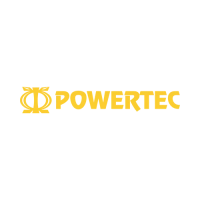Page
22
Model
1000
Installation and Operation Manual
6/1/2001 © copyright 1997 by Powertec
DIGITAL MODE NOTES
Since the Brushless DC motor control system is inherently digital,
the performance in the digital mode of operation far exceeds the
performance in the analog mode. In the digital mode the control and
motor respond to a frequency signal fed to the control from an external
source.
In the digital mode, we use the same digital control circuitry for the
speed control as we do in the analog mode. The analog output of the
accel/decel circuits drives a voltage-controlled-oscillator (VCO), which in
turn feeds the digital circuitry. We bypass the VCO in digital mode and
use an external reference frequency to control speed.
Activate the digital mode by applying a nominal +24 VDC voltage to
TB1 terminal 10, positive with respect to TB1 terminal 9 (figure 16).
There is also a jumper next to P2 on the Current Controller board (141-
108) which, when placed in the AF position, switches the control into the
digital mode without energizing terminal 10.
Either of these actions disconnects the control's internal VCO and
looks for a frequency at TB1 terminal 11, which must be positive with
respect to TB1 terminal 9. This frequency signal must meet certain
specifications:
"ON" VOLTAGE: 18 VDC min, 30 VDC max
"OFF" VOLTAGE: less than 1.5 VDC
FREQUENCY: 2X desired RPM (250 frames or smaller)
DUTY CYCLE: 25% min, 75% max
MAXIMUM FREQ: 50 KiloHertz
You can obtain the best tracking by "ramping" the frequency, that is,
changing the frequency gradually. The motor accelerates in current limit if
a frequency is present when the control starts.
The nature of the Brushless DC motor control is that the motor must
return a pulse for each reference pulse supplied, except in current limit!
You will lose pulses if the control goes into current limit, even for a brief
time. So it is best to not change the external frequency so rapidly that the
motor cannot respond without going into current limit.

